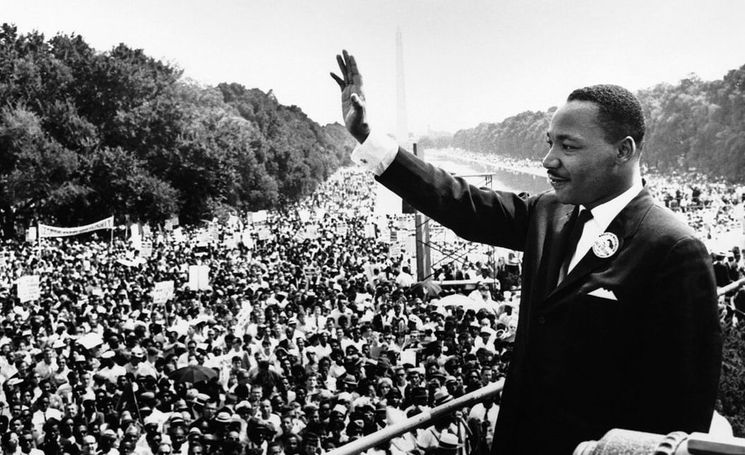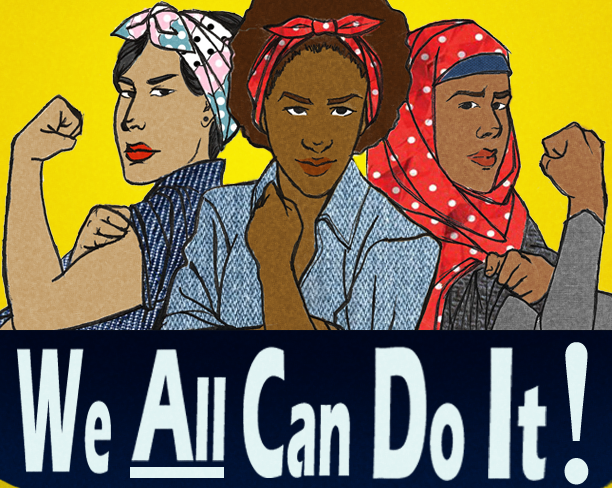|
Our nation has a long history of protests and marches in the name of freedom and equality. On August 28, 1963, one of the largest civil rights rallies was held in Washington D.C. and has become known as arguably the most influential and iconic march in American history, setting a precedent for countless of other monumental protests that followed. This march, commonly known as the March on Washington for Jobs and Freedom, was organized by A. Philip Randolph and Bayard Rustin, two African American activists who collaborated with numerous labor, civil rights, and religious organizations to plan the legendary march. While famous singers such as Bob Dylan, Mahalia Jackson, and Joan Baez performed in the name of racial, social, and political equality at this rally, the march also featured famed civil rights leader Martin Luther King, Jr., who gave his “I Have a Dream” speech towards the end of the demonstration. With over 250,000 people in attendance, it has undoubtedly changed political and social aspects of the United States and its influences can still be seen in today’s society.
At the march, Randolph and Rustin read aloud their demands for America, which ranged from a call for a civil rights legislation from Congress to a national minimum wage act that will provide all Americans with a “decent standard of living”. These demands mixed with all the momentum that the rally had created eventually led to what would be known as the Civil Rights Act of 1964, which was a landmark law that outlawed discrimination, especially in the workplace, based on race, color, religion, sex, or national origin. The March on Washington had illuminated the racial and labor injustices that were prevalent in our society, building popular support for a change in American labor, political, and social laws, especially among those who were not African American. Along with banning discrimination, this act had also outlawed segregation in public places, pinpointing a pivotal moment in the civil rights movement in America. The rally had also led to the eventual passing of the Voting Rights Act of 1965, which allowed African Americans to exercise their right to vote under the 15th amendment, with both acts largely reflecting the demands of the rally. Another tangible outcome of the March on Washington was the NFL’s first African American quarterback. At the time, African Americans in pro-football were normally switched to receiver or defensive back positions on the team, as they were deemed not intelligent enough for the position of quarterback. However, inspired by Martin Luther King, Jr.’s speech at the rally, James Harris worked to become a professional quarterback, despite the low chances of success. His work had paid off, however, when he became the first full-time NFL black quarterback, playing for the Los Angeles Rams. While this may not seem like a momentous effect of the rally, it demonstrates both the cultural impact and the influence of the rally, making it possible for African Americans to do what was once thought to be impossible ten years before. The most important outcome of the rally, however, must be how it changed how the world viewed African Americans and the civil rights movement. The rally had inspired peaceful, non-violent protests around the world and made it clear that racism was not going to be faced with compliance. After the protest, bigotry was more frequently and publicly ridiculed and there was a clear transition from a society where racism was seen as a normality to one where it was criticized by more people. While African Americans were still widely discriminated against following the protest, the March on Washington was a clear turning point for the civil rights movement, leading to the passing of many civil rights legislations and inspiring others to resist inequality with more determination than before. Following the footsteps of civil rights activists in the 1960's and before, society continues to fight for a wider spread of social equality throughout the U.S. and the world, as rallies such as the 1963 demonstration have given countless of people a glimpse into what a world of love and freedom could look like. -Caitlyn Phu President of the Heart2Art Project
0 Comments
as ter·ror·ism ˈterəˌrizəm/ noun
Last night, a white man named Stephen Paddock opened fire on a concert near Mandalay Bay Casino in Las Vegas, Nevada. As of 9:28 A.M. on Monday morning, over 515 people have been injured and more than 58 were killed. This is the deadliest mass shooting in modern U.S. history. The state of Nevada defines terrorism as “any act that involves the use or attempted use of sabotage, coercion, or violence which is intended to ... cause great bodily harm or death to the general population.” That definition clearly applies to this extreme case of terrorism. Sheriff Joe Lombardo indicated that they are not treating this crime as a terrorist attack. We are constantly seeing clear cases of terrorism be treated as a simple crime of madness. How this attack is being dealt with reflects the killing in Charlottesville, when a alleged white supremacist drove his car into a crowd of counter protesters, yet was never deemed a terrorist by the government. Our own president failed to recognize the Las Vegas attack as a terrorist attack, even though it embodied the exact definition of terrorism. The hundreds of shots that had rang out were heard around the world, causing pain, grief, and, most importantly, terror. We need to stop making a certain race or religion solely responsible for terrorism. The true definition is more important than one person's opinion about the color of skin. Modernized terrorism has stained the images of Muslims in the minds of Americans. Some people tend to label terrorism by looking at the color of skin rather than facts. As Americans, we need to fight these stereotypes and make everyone truly equal in the eyes of the government and the people around us if we are to accurately address these attacks and educate our generation. -Julia Barry Co-VP of Journalism and Publication |


